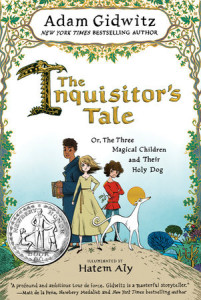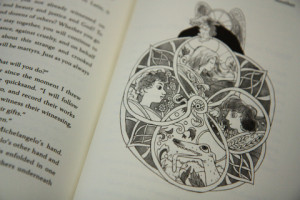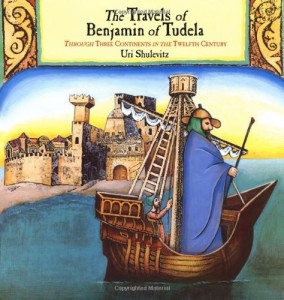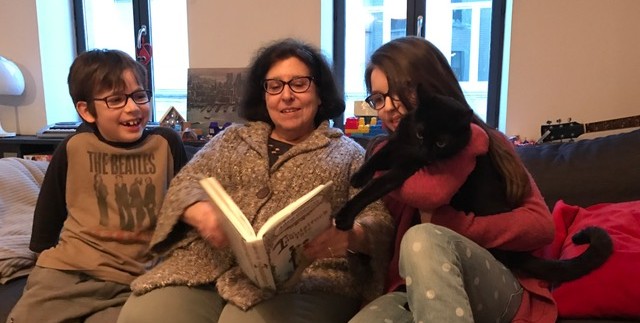Before computers, before television or radio, before movies, before printed books, before hand written scrolls or clay tablets, there were stories and tellers who would keep listeners mesmerized for hours with tales of heroic deeds, unspeakable evil and the conflict between the two.
If you have ever read to a child or made up a story, if you’ve ever listened to NPR and just had to hear the end of a story no matter where you were, you know the power of story and the human voice.
Reading aloud to children has its own special power as I am reminded whenever I conduct a storytime or meet with a group of kids.
 This was reinforced as my grandchildren and I sat together each evening to read from the recent book The Inquisitor’s Tale or, the three magical children and their holy dog.
This was reinforced as my grandchildren and I sat together each evening to read from the recent book The Inquisitor’s Tale or, the three magical children and their holy dog.
The book is this year’s winner of the Sydney Taylor Book Award for older readers, a National Jewish Book Award finalist, a Newbery Award honor book, and the recipient of numerous starred reviews.
It is a rip-roaring tale set in France in 1242, featuring the wanderings of three children and a dog: Jeanne, a peasant girl who has visions of the future; biracial William , a monk in training whose questioning mind and huge size has gotten him kicked out of the monastery; and Jacob, a Jewish boy whose town has just been destroyed by rampaging Christians and who has the ability to heal others. Guinforte is a miraculous greyhound, risen from the dead who accompanies the children as they run from evil knights and ubiquitous dangers.
 The characters and events are inspired by real people like Joan ofArc and William of Orange; legends such as the story of the miraculous greyhound; and events, including the burning of 20,000 volumes of the Talmud in Paris.
The characters and events are inspired by real people like Joan ofArc and William of Orange; legends such as the story of the miraculous greyhound; and events, including the burning of 20,000 volumes of the Talmud in Paris.
Adam Gidwitz, the author of this unique book, which took six years to write, has brought together many themes from the Middle Ages using a Canterbury Tales-like format of multiple tellers relating what they know about the characters. In fact, one reviewer called The Inquisitor’s Tale “Canterbury Tales meets X-men.”
The New York Times said that the book “is equal parts swashbuckling epic, medieval morality play, religious polemic, and bawdy burlesque propelling us toward a white knuckle climax where three children must leap into a fire to save…a Talmud.”
The language is rich, but accessible, with enough humor, action, and scatalogical remarks to keep any perceptive boy on the edge of his seat.
While this is a book written for older children, middle school and up, with an adult at hand to explain , it is not beyond a second or third grader, just as the Harry Potter books or some children’s classics are.
As I read each evening, Suzanne, nearing eleven, and Max, aged 7, would move closer and closer to become part of the story and look at the illumination like illustrations that concretized some of the action.
For a memory making experience, read to your children often. It’s something you will never regret or forget as I hear my father’s voice in my memory bank reading to me at bedtime many years ago or recall a favorite teacher reading Mr. Popper’s Penguins to a spell-bound class of 5th graders at the Pine Street School. It’s those experiences and memories that help to make our children readers.
 Other books set in the same time period include:
Other books set in the same time period include:
Cameron, The Fruit of her Hands: the story of Shira of Ashkenaz
Follett, The Pillars of the Earth and others
Schlitz, Good Masters, Sweet Ladies
Shulevitz, The Travels of Benjamin of Tudela: through three continents in the twelfth century
- Is It Passover Yet? - Thu, Apr 18, 2024
- MESH Report April 9, 2024 - Thu, Apr 11, 2024
- Guess Who? - Wed, Mar 13, 2024


Thank you for opening yet another window into your travels and your family. What a beautiful piece about the power of reading aloud. If everyone would put their devices away and spend more time reading together, we would have a brighter future.